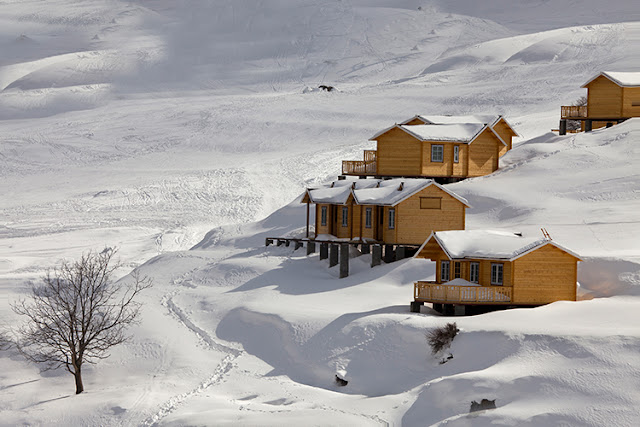 |
| Tranquility Canon 5D Mark II, f/10, 1/640, ISO 100, Exposure Bias -0.7 Stop, Partial Metering |
What
is exposure?
Exposure, in photographic terms,
is the process of capturing light with your camera to produce an image on a
film or a digital sensor. When we look at something, our eyes adjust very quickly
so we can see it properly. With exposure in photography, things are very similar.
There are two functions that matter here. One is the ability to adjust to the
brightness of the subject and the other is adjustment to its distance from us
(Focus).
To professional photographers, exposure holds great
concern as it contains a certain notion of risk and a certain amount of
irremediable commitment. Once the exposure has been set on a camera and the
subsequent photograph taken there is no way to physically change this exposure.
You are done, set and have to live with the consequences. Hopefully the
exposure is “right on” and the photograph holds details everywhere.
 |
| Ready for the Kill (Indian Pond Heron) Canon 1D Mark IV, f/8, 1/500, ISO 200, Exposure Bias - 1 stop, Partial Metering |
But what if the photograph does not hold detail
everywhere? What if your calculated exposure isn’t absolutely, 100% correct?
What if your calculations were off, what if you made a mistake! More
importantly, in order to avoid post-photographic-exposure stress, how can one
calculate, with absolute accuracy, the perfect exposure, each and every time,
in the field?
However, exposure isn’t rocket science. There is a
certain amount of leeway, adjustment and artistic interpretation involved. The
goal of learning how to expose is not only being able to determine the
“correct” exposure. Most cameras do this automatically and in many instances we
can trust what they tell us. Plus, with the histogram function we can visualize
how the final image will be exposed.
 |
| Hide and Seek Canon 5D Mark III, f/10, 1/800, ISO 400, Partial Metering |
The goal of learning more about exposure is to gain
control over how our photographs are exposed. Our goal is not only to find the
proper exposure but rather to find the exposure which will give us the effect
we are looking for. A properly exposed photograph is one we will eventually
consider for printing. In this sense such a photograph is what is often
referred to as a keeper. But being properly exposed is not enough to make a
photograph a keeper. Other things come into play when making this selection
such as, shadows, contrast, etc.
Happy Clicking!

Interesting stuff and look forward to more information around the same.
ReplyDeleteNicely described the importance of exposure.
Thanks VJ, Will keep them coming..
DeleteVery succinctly put, Jasminderji. The explanation couldn't be any more simpler.
ReplyDeleteThanks a lot Devansh.. Always wanted to keep it simple here.. Glad to know that I succeeded :)
DeleteGood kickoff.. evokes interest. Looking forward to more, Jassi..
ReplyDeleteThanks Pankaj..
Deletedescription is nice but i think its not for new photographer. Can you add information about how to make correct exposure? what the formula for that? n all.. Thank you
ReplyDeleteVinayak this is build upto the main article..
DeleteAmazing article , You teach every thing in such a simple and easy way - Thankyou sir ! :D
ReplyDeleteThanks Sanchit.. Glad you liked it..
DeleteExposure is the life of a photograph and to capture LIFE one needs to be careful on many fronts. The wise capture LIFE and save it for Posterity to be enjoyed not only by the photographer but for the world in general. Jassiji, I am a self taught photographer like you,who has invested 20 years in wedding photography but not for professional gain but for a passion. I cannot even compare myself to your esteemed excellence. You have explained the very essence of exposure in such a nice and simple way, that even a beginner will now take interest in photography.
ReplyDeleteThanks a lot Pervezji for such encouraging words.. I am a learner and try to improve with every shot.. through this blog I will try to share my knowledge in simplest possible way..
ReplyDelete